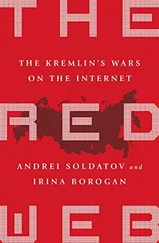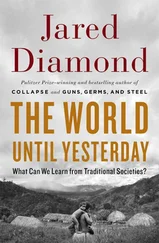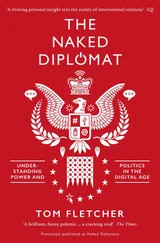Jared Cohen - The New Digital Age
Здесь есть возможность читать онлайн «Jared Cohen - The New Digital Age» весь текст электронной книги совершенно бесплатно (целиком полную версию без сокращений). В некоторых случаях можно слушать аудио, скачать через торрент в формате fb2 и присутствует краткое содержание. Жанр: Старинная литература, на английском языке. Описание произведения, (предисловие) а так же отзывы посетителей доступны на портале библиотеки ЛибКат.
- Название:The New Digital Age
- Автор:
- Жанр:
- Год:неизвестен
- ISBN:нет данных
- Рейтинг книги:5 / 5. Голосов: 1
-
Избранное:Добавить в избранное
- Отзывы:
-
Ваша оценка:
- 100
- 1
- 2
- 3
- 4
- 5
The New Digital Age: краткое содержание, описание и аннотация
Предлагаем к чтению аннотацию, описание, краткое содержание или предисловие (зависит от того, что написал сам автор книги «The New Digital Age»). Если вы не нашли необходимую информацию о книге — напишите в комментариях, мы постараемся отыскать её.
The New Digital Age — читать онлайн бесплатно полную книгу (весь текст) целиком
Ниже представлен текст книги, разбитый по страницам. Система сохранения места последней прочитанной страницы, позволяет с удобством читать онлайн бесплатно книгу «The New Digital Age», без необходимости каждый раз заново искать на чём Вы остановились. Поставьте закладку, и сможете в любой момент перейти на страницу, на которой закончили чтение.
Интервал:
Закладка:
To buttress their campaign for public support, exiles will use the virtual institutions they control to win the hearts and minds of the population. Imagine a shadow government that pays and deploys an in-country security force comprising various foreign nationals to protect community strongholds, while providing e-health benefits from Paris (independent hospital administrations, coordinating free vaccination campaigns, extending virtual health-insurance plans, coordinating a network of remote doctors available for diagnostic work) and running online schools and universities from London. This government-in-exile could elect its own parliament, with campaigns and voting taking place entirely online, members drawn from several countries and sessions conducted over live-streaming video channels that can be watched by millions around the world. Even the semblance of a functioning shadow government might be enough to sufficiently sway the population at home to transfer their support from the official government to the one built and operated remotely by the exiles.
The remaining distinguishing feature of a reconstruction prototype will be close engagement with the diaspora communities. Governments-in-exile often draw from the intellectuals in the diaspora, but the role of external communities will not only be political or financial (in the form of remittances). Connectivity means that these groups will be able to work more closely together on a much wider range of issues. The insight and depth of knowledge relevant to reconstruction possessed by members of diaspora communities is invaluable, so with greater access to communication technologies, postcrisis societies will be able to tap into those reserves of human capital in a significant way. We’ve already seen signs of this in some of the world’s recent crises. The Somali diaspora actively used tools like Google Map Maker to identify areas affected by the 2011 drought in the Horn of Africa, using their local knowledge and connections to compile more accurate reports than outside actors could.
In the future, we will see the creation of diaspora reserve corps, with those living abroad organized by trade: doctors, police officers, construction workers, teachers and so on. States will have an incentive to organize their diaspora communities—assuming those communities are not all political exiles hostile to the state—so that they know who possesses skills that might be required in a country’s time of need.
Today, several diaspora communities are far more successful than the population living back home (this includes the Iranian, Cuban and Lebanese diasporas, but also smaller groups like the Hmong and Somalis). But only portions of these communities are still connected to their native lands; many have, by choice or as a consequence of time, embraced their adoptive countries for the opportunities, security or quality of life they provide. As connectivity spreads, the gap between diaspora and home communities will shrink, as communication technologies and social media strengthen the bonds of culture, language and perspective that connect these distant groups. And those who leave their country as part of a brain drain will be leaving countries far more connected than today, even if those places are poor, autocratic or short on opportunities. Members of the diaspora, then, will be able to create a knowledge economy in exile that leverages the strong educational institutions, networks and resources of developed countries and channels them back constructively into their home countries.
Opportunism and Exploitation
In the aftermath of every major conflict or natural disaster, new actors flood the space: aid workers, journalists, U.N. officials, consultants, businessmen, speculators and tourists. Some come to offer their services, while others are hoping to exploit the crisis environment for political or economic gain. Many do both, and rather effectively so. 3
Even those who don’t seek financial gain have reasons beyond altruism to get involved. A postcrisis country is a great proving ground for nascent NGOs, and a platform for established nonprofit organizations to demonstrate their value to their donors. This rash of new participants—altruists and opportunists alike—can do great good, and tremendous damage. The challenge for reconstruction planners in the future will be finding ways to balance the interests and actions of all these people and groups in a productive manner.
Generally speaking, connectivity encourages and enables altruistic behavior. People have more insight and visibility into the suffering of others, and they have more opportunities to do something about it. Some scoff at the rise of “slacktivism”—slacker activism, or engaging in social activism with little or no effort—but transnational, forward-thinking organizations like Kiva, Kickstarter and Samasource represent a vision of our connected future. Kiva and Kickstarter are both crowd-funding platforms (Kiva focuses on micro-finance, while Kickstarter focuses mostly on creative pursuits), and Samasource outsources “micro-work” from corporations to people in developing countries over simple online platforms. There are other, less quantifiable ways to contribute to a distant cause than donating money, like creating supportive content or increasing public awareness, both increasingly integral parts of the process.
As more people become connected around the world, we’ll see a proliferation of potential donors and activists ready to contribute to the next high-profile crisis. With real-time information about conflicts and disasters around the world increasingly accessible and available, spread evenly across different platforms in different languages, a crisis in one country can reverberate across the world instantly. Not everyone receiving the news will be spurred to action, but enough people will so that the scale of participation will rise dramatically.
Examining the aftermath of the Haiti earthquake once again will give a good indication of what the future holds. The level of destruction near the capital in Haiti, a densely populated and immensely poor country, was overwhelming: homes, hospitals and institutional buildings collapsed; transportation and communications systems were devastated; hundreds of thousands were killed and 1.5 million more made homeless. 4Within hours, neighboring governments sent in emergency-services teams, and within days many countries around the world had pledged or already delivered aid.
The response from the humanitarian community was even more robust. Within days of the earthquake, the Red Cross had raised more than $5 million through an innovative “text to donate” campaign in which mobile users could text “HAITI” to a special short code (90999) to donate $10, automatically charged to their phone bill. In all, some $43 million in aid passed through mobile donation platforms, according to the Mobile Giving Foundation, which builds the technical infrastructure many NGOs used. Télécoms Sans Frontières, a humanitarian organization that specializes in emergency telecommunications, deployed on the ground in Haiti one day after the earthquake to establish call centers to allow families to reach loved ones. And just five days after the earthquake, the Thomson Reuters Foundation’s AlertNet humanitarian news service set up the Emergency Information Service, the first of its kind, which allowed Haitians free SMS alert messages to help them navigate the disaster’s impact.
Emergency relief efforts turned into longer-term reconstruction projects, and within months there were tens of thousands of NGOs working on the ground in Haiti. It’s hard to imagine tens of thousands of aid organizations working efficiently—with clear objectives and without redundancy—in any one place, let alone a country as small, crowded and devastated as Haiti. As the months dragged on, unsettling reports about inefficient aid distribution began to surface. Warehouses were full of unused pharmaceuticals left to expire because of poor management. Cholera outbreaks in the sprawling informal settlements threatened to wipe out many of the earthquake survivors. The delivery of funding from institutional donors, mostly governments, was delayed and difficult to keep track of; very little of the funding ever reached the Haitians themselves, having been utilized instead by any number of foreign organizations higher up on the chain. Hundreds of thousands of Haitians were still in unsanitary tent cities a year after the earthquake, because the government and its NGO partners had not yet found a way to otherwise house them. For all the coverage, the fund-raising, the coordination plans and the good intentions, Haitians were not well served in the post-earthquake environment.
Читать дальшеИнтервал:
Закладка:
Похожие книги на «The New Digital Age»
Представляем Вашему вниманию похожие книги на «The New Digital Age» списком для выбора. Мы отобрали схожую по названию и смыслу литературу в надежде предоставить читателям больше вариантов отыскать новые, интересные, ещё непрочитанные произведения.
Обсуждение, отзывы о книге «The New Digital Age» и просто собственные мнения читателей. Оставьте ваши комментарии, напишите, что Вы думаете о произведении, его смысле или главных героях. Укажите что конкретно понравилось, а что нет, и почему Вы так считаете.












